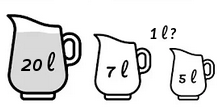I wrote a simple new program in Perl, yeartable.pl, another one like this other old calendar program, but now I try to visualize all the days of a given year in one page, suitable to be copied to your favourite word processor and then printed, to get a calendar like this:
To run it you need to provide the year, the names of the months and the names of the week days, for example:
$ perl yeartable.pl
Use: perl yeartable.pl YEAR "Jan,Feb,..." "Sun,*Mon,..."
(put * in the week-day to be the first row in the table)
$ perl yeartable.pl 2025 "Jan,Feb,Mar,Apr,May,Jun,Jul,Ago,Sep,Oct,Nov,Dic" "S,*M,T,W,T,F,S" > 2025.html
And then you can open the generated file with an internet browser, copy the table directly to a word processor and adjust the format. Enjoy!


